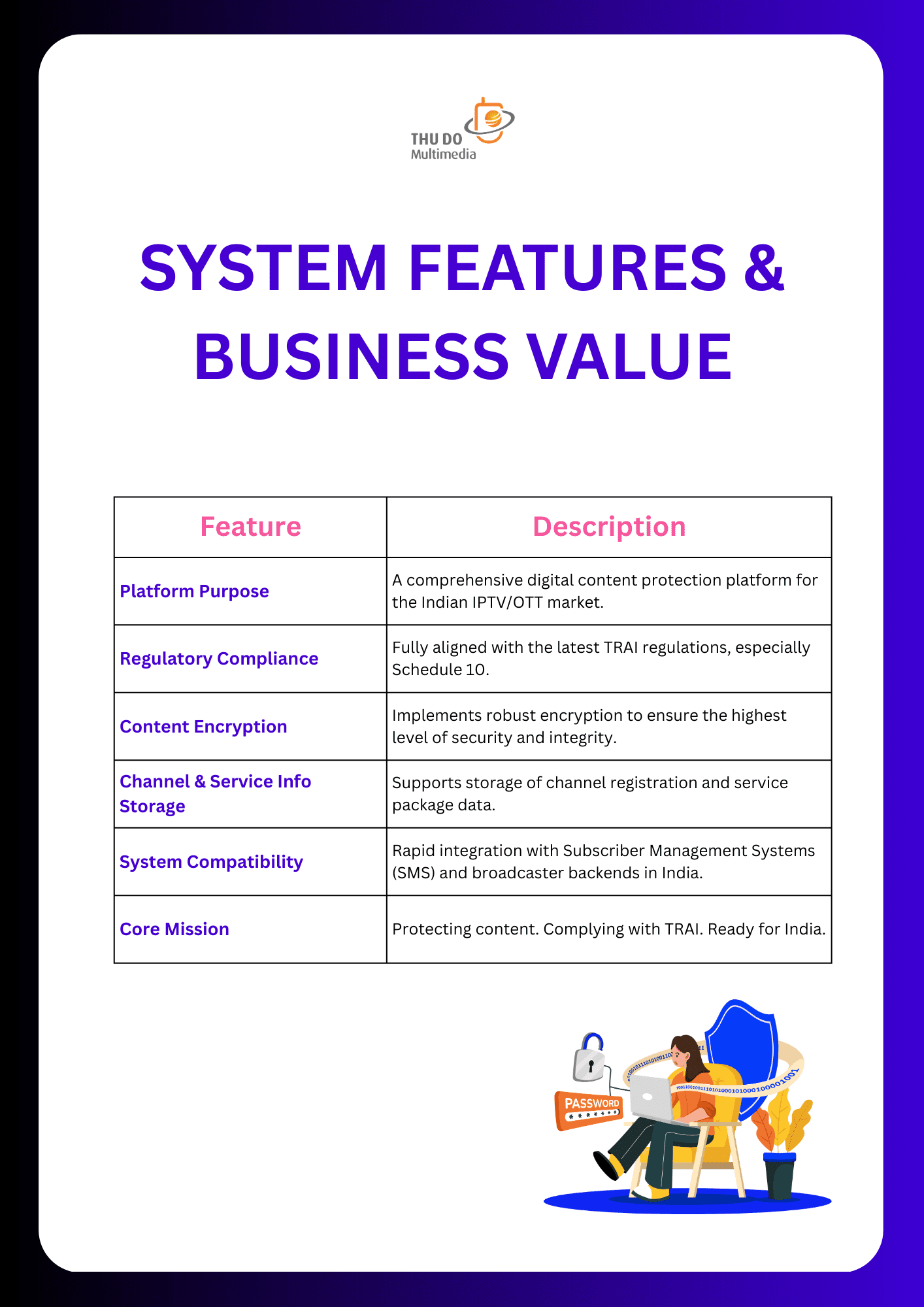10th Schedule is raising serious concerns among IPTV/OTT providers in India. Learn how it impacts compliance, technology, and what you can do to adapt effectively.
1. What is 10th Schedule and Why is It a Hot Topic in India’s OTT Industry?
Since March 2024, the term 10th Schedule has become a buzzword across India’s broadcasting and OTT forums. For many IPTV and OTT businesses, this marked a turning point. 10th Schedule is not just a regulatory appendix – it’s a wake-up call. It signals tighter legal oversight, higher compliance expectations, and the elevation of OTT platforms to the same level of scrutiny as traditional broadcasters.
If you’re operating an OTT platform or providing IPTV services in India, understanding and adapting to 10th Schedule is no longer optional – it’s essential.
Learn more about data retention requirements in India’s: Telecom Act 2023
2. 10th Schedule Explained: A New Era in Indian Telecom Regulation
10th Schedule is an annex added to the Amended Indian Telecommunication Act 2023. For the first time, OTT platforms (particularly video streaming and internet-based TV) are explicitly brought under the same regulatory framework as conventional broadcasting services.
Key Provisions in 10th Schedule That Impact OTT Platforms
- Mandatory registration and licensing akin to television broadcasters.
- Pre-screening of content before publication.
- Logging and retention of content for a minimum of 180 days.
- Obligation to remove flagged content within 24 hours upon government notice.
- Administrative fines of up to ₹50 lakh (~$60,000 USD).
3. How 10th Schedule Impacts IPTV/OTT Systems in India
3.1. Legal Pressure and Operational Risk
Before 10th Schedule, many OTT platforms operated in a regulatory grey area. Now, they are being reclassified as full-fledged broadcasters.
A startup OTT provider shared: “Compliance costs could now take up 20–30% of our annual operating budget.”
3.2. Technical Overhaul Required
10th Schedule is not just a legal challenge—it’s a wake-up call for OTT platforms to modernize their entire backend infrastructure. If you want to survive (and thrive) in India’s new regulatory landscape, here’s where you must act fast:
a. Full Logging and Storage: Be Transparent, Stay Protected
Every click, every stream, every second, platforms must now retain full session logs. This isn’t just about compliance; it’s about building trust. Your backend must be ready to:
- Store user streaming activity securely for 180 days.
- Provide quick access to playback logs during audits.
- Show clear encryption and DRM tracking per session.
If your system can’t deliver that today, it’s time to upgrade before the fines start rolling in.
b. Content Takedown Automation: Respond in 24 Hours or Less
Manual removals? Outdated. Under 10th Schedule, you only have 24 hours to take down content flagged by authorities. You need:
- A takedown engine that responds instantly across web, app, and smart TVs.
- Integration with legal request APIs for real-time compliance.
- Reporting tools that prove action was taken down to the minute.
Fail to act fast, and your entire platform could be blacklisted. Speed isn’t optional. It’s survival.
c. AI-Powered Risk Detection: Publish Smart, Not Sorry
Before your content goes live, it should be screened by AI that understands India’s sensitivities:
- Detect hate speech, adult scenes, political risks even nuanced cultural cues.
- Score your content for risk level.
- Flag anything problematic before it sparks controversy (or a fine).
Smart publishers aren’t reacting. They’re predicting. AI is your front line of defense.
With 10th Schedule, the era of “stream now, fix later” is over. The future belongs to platforms that are proactive, secure, and smart from the inside out.
4. Will 10th Schedule Stifle Innovation?
While aimed at regulatory clarity, 10th Schedule is creating concern among creators and indie producers:
- Startups face greater barriers to entry.
- Creative content release gets delayed.
- Indie filmmakers and content creators are turning away from local platforms.
5. Final Thoughts: 10th Schedule – Threat or Opportunity?
10th Schedule is the ultimate test of readiness for India’s OTT ecosystem.
It’s not just a regulation, it’s a turning point. Platforms that invest in technology, legal compliance, and high-quality content will rise as tomorrow’s market leaders.
Those who ignore it? They risk massive penalties, or worse being shut down.
Now is the time to act. One step behind could mean losing the entire game.
Sigma DRM – Ready for 10th Schedule. Ready for India.
Sigma DRM is a comprehensive digital content protection platform, purpose-built for the IPTV/OTT market in India. The system fully complies with the latest legal requirements from TRAI, especially 10th Schedule, including:
- Robust content encryption ensuring the highest levels of integrity and security.
- Storage of channel registration details and service package information.
- Fast compatibility with SMS systems and subscriber management backends used by Indian broadcasters.
Sigma DRM — Protecting content. Complying with TRAI. Ready for India.

Sigma DRM – Built for Anti-Piracy. Compliant by Design. Trusted by Industry Leaders.
Worried about whether your OTT platform complies with 10th Schedule?
👉 Contact our DRM technology experts: Demo/POC with Thu Do Sale


Recent Comments